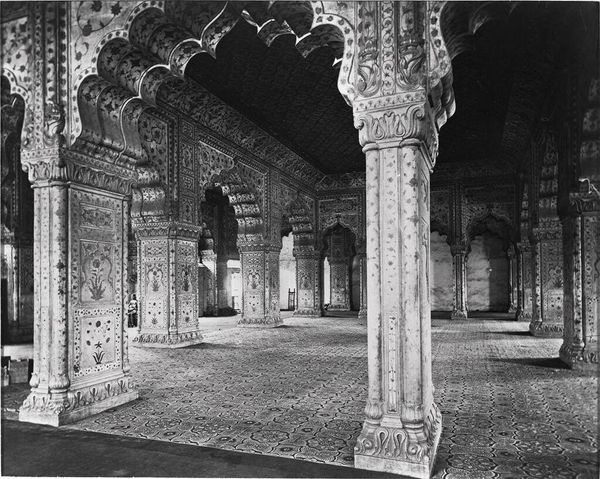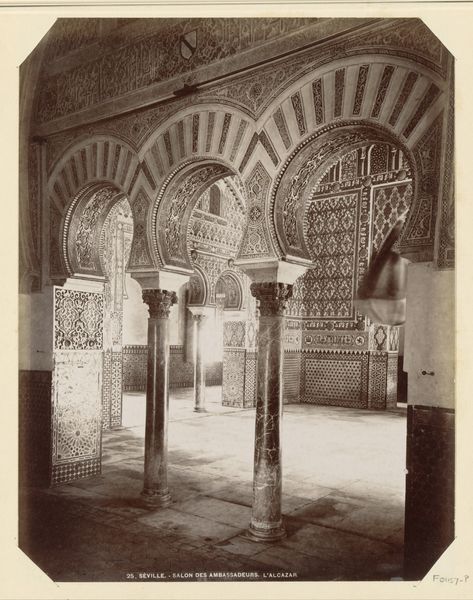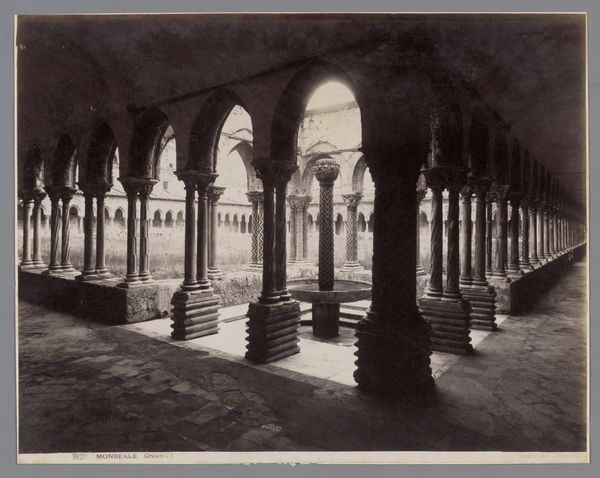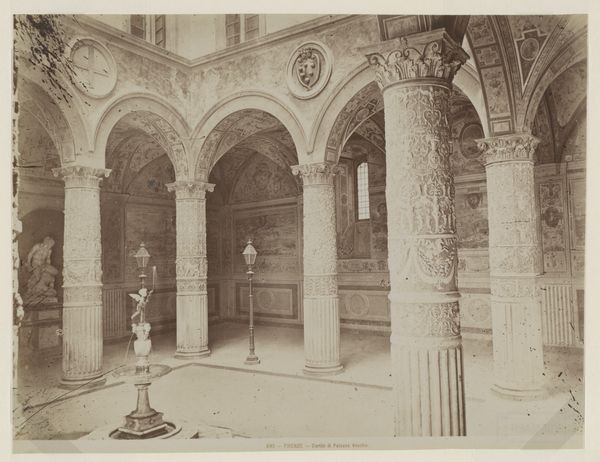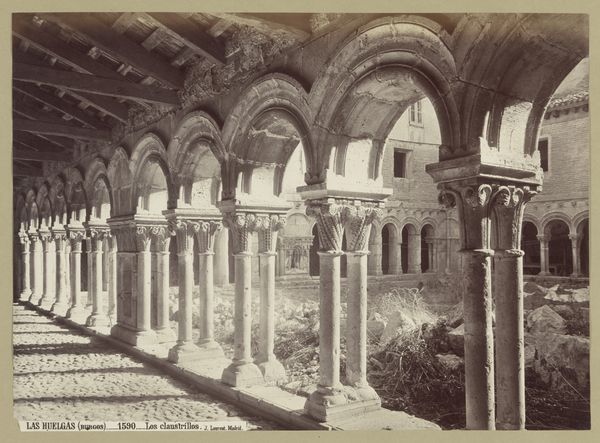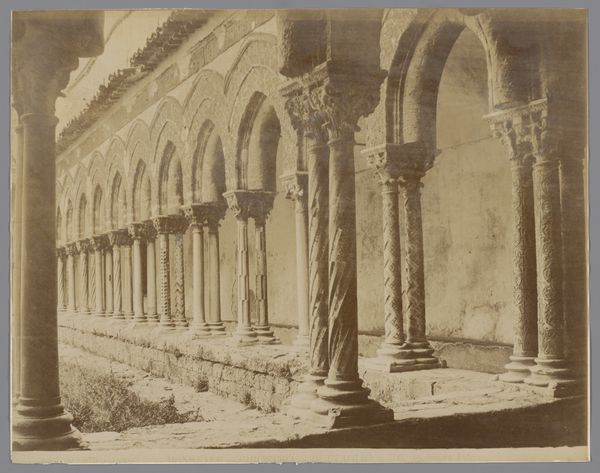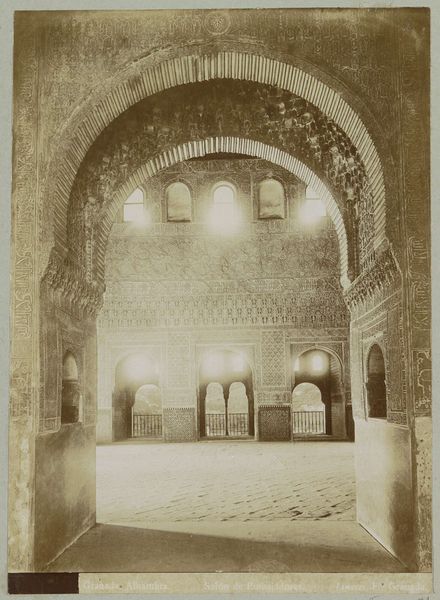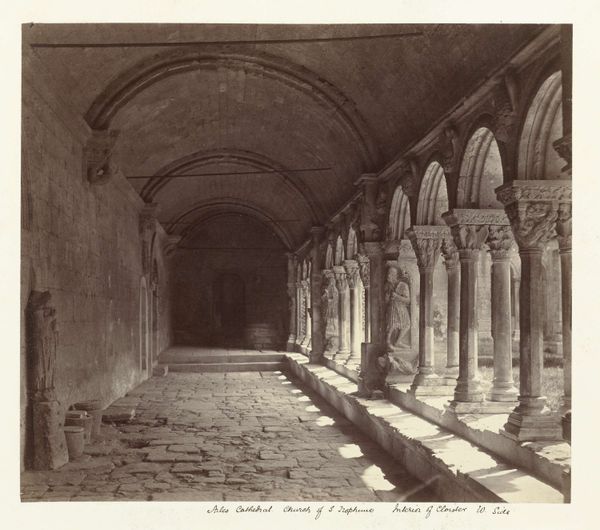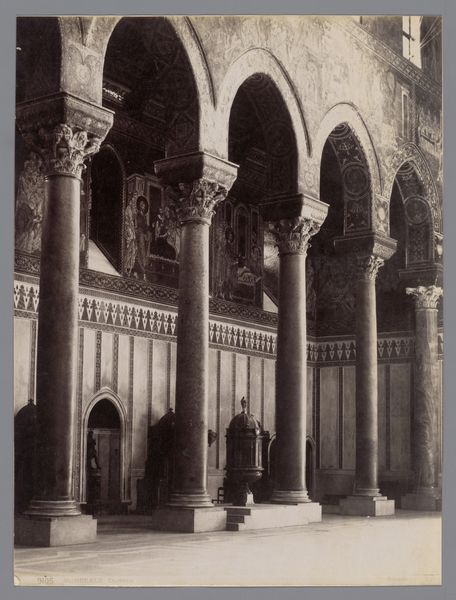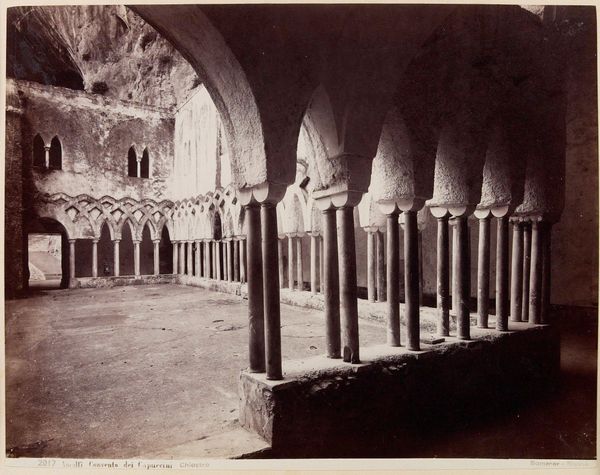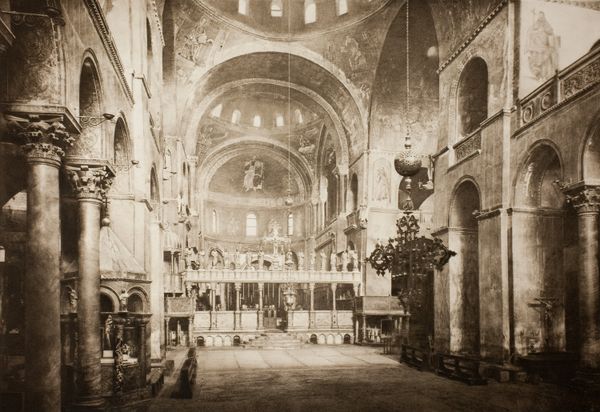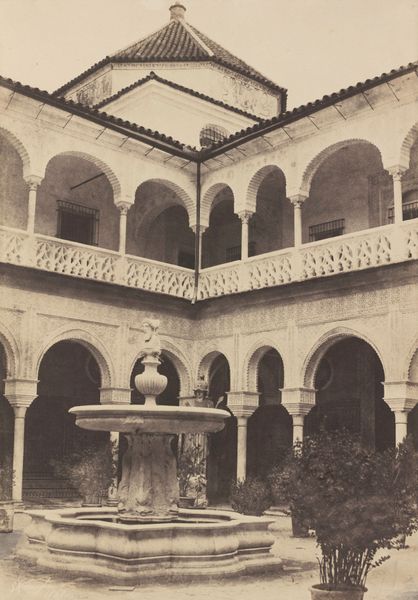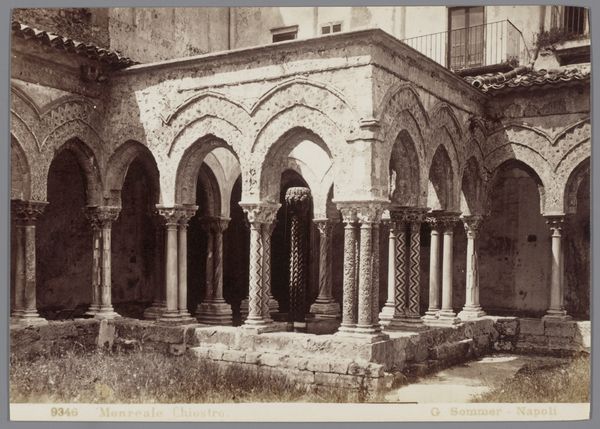
drawing, ink, architecture
#
drawing
#
charcoal drawing
#
ink
#
geometric
#
architecture drawing
#
architecture
#
realism
Copyright: Public domain
Editor: So, this is Giuseppe Barberis's "L’interno Visto Diagonalmente" from 1900, done in ink and charcoal. It depicts the interior of what looks like a basilica. I’m immediately struck by how the rows of columns create a strong sense of depth. What do you make of it? Curator: For me, this drawing really highlights the material conditions of art production at the turn of the century. Consider the use of ink and charcoal – readily available, relatively inexpensive materials. Why choose them to depict such an opulent interior? What statement is Barberis making about accessibility and the democratization of art? Editor: That's interesting. I hadn't thought about it in terms of accessibility. I guess I was just seeing the impressive detail. Curator: And that detail is key. Think about the labour involved in creating this intricate rendering. Each line, each shadow represents hours of skilled craftsmanship. Is Barberis celebrating the beauty of the architecture, or subtly drawing attention to the workforce and the processes necessary to construct and maintain such a space? Who would have commissioned the drawing and for what purpose? Editor: So, instead of just appreciating the final product, we should be thinking about the human element and the resources needed to even create this image? Curator: Precisely! Consider how the drawing circulated. Was it for study, or mass production? Its social impact would radically depend on the audience consuming it. It forces us to acknowledge the full spectrum of factors, material and social, that shape our engagement with art. Editor: That's a completely different perspective than I usually take. I guess looking at art this way opens up a whole new realm of questions to explore. Curator: Absolutely. It’s about understanding the interconnectedness of art, labour, and society. The “invisible” parts of any work that, when understood, greatly enhance its meaning. Editor: Okay, I see it. I'll never look at ink and charcoal the same way again! Thanks!
Comments
No comments
Be the first to comment and join the conversation on the ultimate creative platform.
